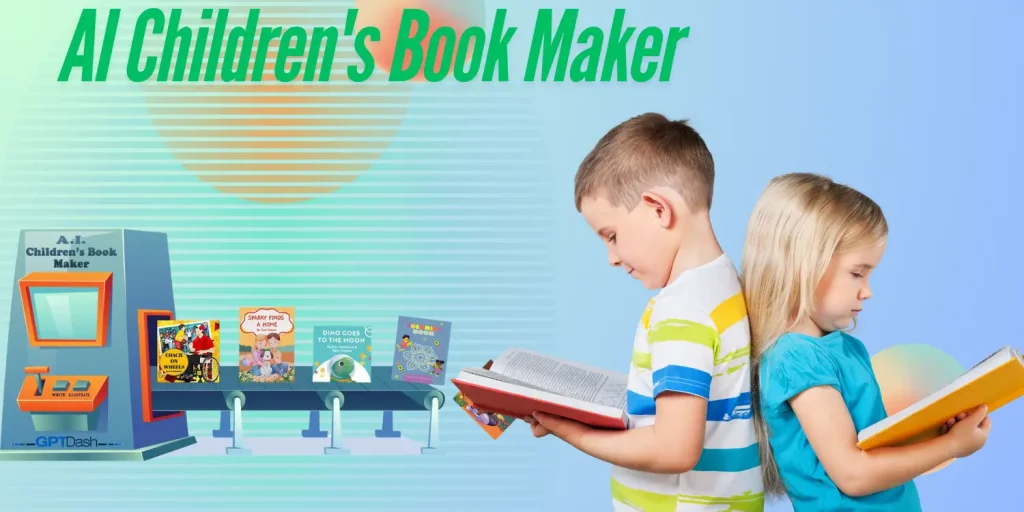Introduction to AI Children’s Book Maker?
An AI children’s book maker is a powerful tool that allows creating engaging, informative, and enjoyable stories for children. These platforms claim to use artificial intelligence (AI) technology in generating personalised stories, pictures, and even activities, which would make it easier for schools, parents, or authors to develop unique books. The novels are also not only entertaining but are also suitable for the age demographic because the AI technology is designed to understand the content, language, and level of topic that young readers should consume.
Under normal circumstances, the use of the process is initiated by the user, who inputs a rudimentary theme or concept, for instance, a story of learning, friendship, and sometimes, adventure. When the concept has been created, the AI can elaborate and create the more complex setting, characters, and plots. In addition, many AI-based children’s book developers now have integrated picture or artwork generation features that allow the storytellers to have everything in one application.
Interactivity is one of the main strengths of AI’ children’s book makers. These platforms allow anyone to create high-quality AI Children’s Book Maker with little to no experience in art or writing. It can be used by teachers to come up with storybooks or lesson content that will interest the pupils or meet the needs of their class, and it can also be used by parents to create bedtime stories that meet the desires of their AI Children Book Maker.
AI also supports the process of feedback and the possibility of many cycles within a small period. The aspect of writing a book is made easy and fun by the fact that authors can try out different plot patterns, characters, and topics with little changes. Finally, an AI children’s book maker allows authors to implement their concepts and develop creativity and reading passion in children.
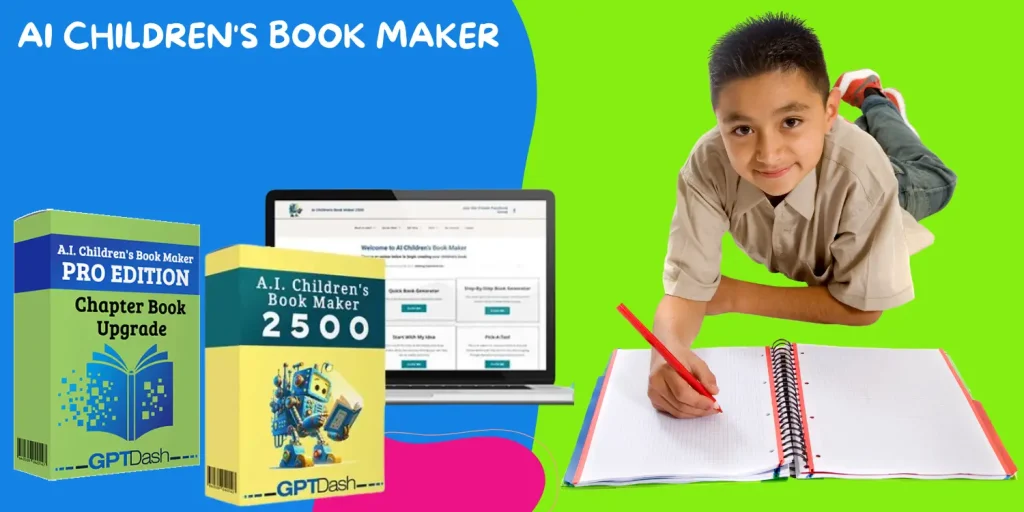
What is AI Children’s Book Maker used for?
AI Children’s Book Maker is an application designed to help writers, educators, and illustrators to write and illustrate AI Children’s Book Maker by incorporating the use of artificial intelligence. This software can write specific text, draw, and format a book, and it helps the users to create books easily and without deep knowledge of how it should be done.
The book is entitled AI. Children’s Book Maker is mainly used in creating an idea for a tale, building a plot, and creating illustrations that can fit young and young-growing minds of the readers. AI has an option for plotlines, characters’ names and places, dialogue, and sketches, which are very beneficial to a visionary writer who may not be capable of writing or sketching. For further convenience, users offer simple concepts or topics, and the text will be created based on these inputs.
To match the style, colours, or characters with the content, type of AI Children’s Book Maker, or age group of the book, the AI can also create illustrations relevant to the text. If the authors themselves are not illustrators, this tool enables them to get an idea of how their stories will look when they are illustrated. When using children’s book AI makers, the creators provide book layout templates that the user can edit and create clean, professional layouts without the need to use graphic design.
The other advantage of the AI children’s book makers is that they are capable of producing books across all categories, such as adventure, education, morality, bedtime stories, among others. The technology also ensures that there are different stories fit to different developmental levels since the technology separates the content into different age categories. In light of this, the AI Children’s Book Maker is a priceless tool because it can help reduce the time to produce great AI Children’s Book Maker; everyone who wants to publish children’s books should consider acquiring this tool.

How does it work, AI Children’s Book Maker?
Sometimes teachers, parents, and even authors might not come up with unique ideas for AI children’s book maker; thus, an innovative technique, the AI Children’s Book Maker, was developed. This makes it possible to build narratives, characters, and pictures that are appropriate for given tastes, topics, and/or learning needs; this is attributed to the artificial intelligence applied in the platform.
Basically, the AI Children’s Book Maker works through an intuitive interface, often consisting of graduating input fields or calls with texts that indicate the type of story the user wants to create. These may include moral values, the background of the story, characteristics of the characters, and the kind of story. Following that, the AI constructs a logical story based on this data. Selecting or initiating a fundamental theme or topic for the AI Children’s Book Maker is the first phase of the procedure. Looking for a story, a user might type a plot: a brave animal looking for a treasure in the enchanted forest.
The technologies involved in an AI system include natural language processing (NLP), which enables the AI to design appealing and developmentally sounding stories. In the novel, the computer can make dialogue, narrate scenes, or maintain a certain level of tone without changing much. The end result is a clean story that is complete and can appeal to the children and hold their interest as they are all but forced to learn intended lessons such as kindness, friendship, or solving problems.
AI children’s book makers are well equipped to do not only the narrative but also the images of the book in question. Picture books in this area are popular because they contain illustrations that help explain the story.
To generate images of significance to the content, the application of deep learning for image recognition in combination with generating aesthetically appealing and semantically relevant images is employed. Not only this, lovers of particular platforms can take it still further by choosing specific characters, colours, and styles.
As with the prior works and illustrations, users can often alter the content in order to their preferences after the story and drawings are completed. This may involve editing of the text or the craft in the form of writing the AI Children’s Book Maker name or other facts pertaining to their lives or altering the pictures. This degree of personalisation is the reason why the novel has this kind of feeling: it is distinctive and personal.
Finally, it is important to note that at the end of the creation of the book, the AI Children’s Book Maker often provides the option to print the book or send it as an eBook. The flawless design of a comprehensive personalised AI Children Book Maker that is set to be proffered to the near and dear ones, friends, or students can all be the result that can let the young readers enjoy an appealing and creative read.
In any case, as a result of this AI, children’s book writing is accessible to anyone with a story, idea, or learning goal.
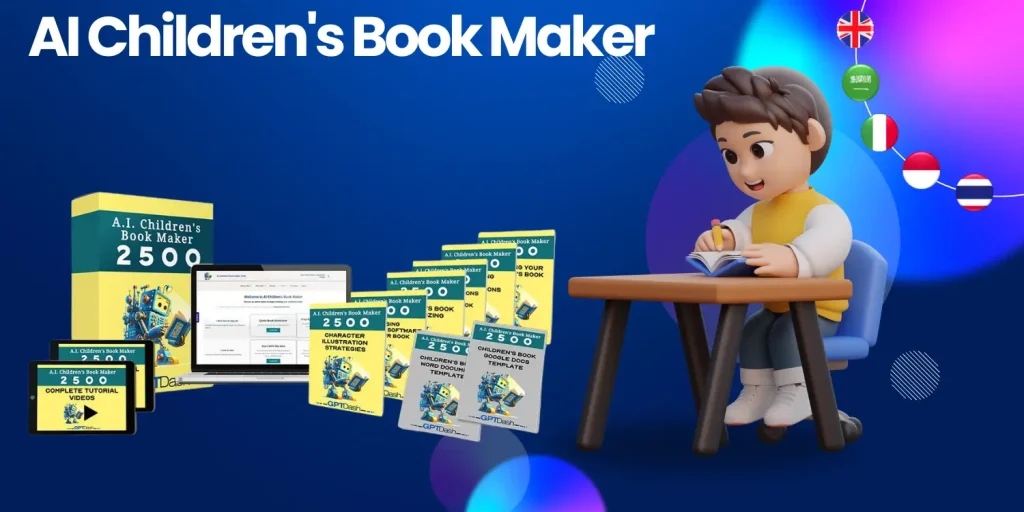
What is the best AI writer for children’s books?
Some of the factors that will help decide which of the AI writers is suitable for AI children’s book maker are the genre, the complexity of the plots, and the age of the target audience. Over the past few years, there has been impressive progress in AI writing instruments, and many platforms have offered good writing capabilities for children’s novels. Below is a summary of some of the top choices:
1. OpenAI’s ChatGPT
With its simplicity and adaptability, AI writing tools, and one of the most widely used, ChatGPT, are ideal for writing children’s books. It is capable of making stories of different forms, including adventure, fairytale, instructions, and so on. Due to the unique ability of input manipulation, ChatGPT can help to write simple children’s stories based on a picture and more complex stories for adults by adjusting the language level, the storyline, and the tone of the narrative.
For example, you can request ChatGPT to create an ELT fun mystery or a bedtime animal tale. Due to great knowledge of the narrative strategies, AI is only able to write entertaining and interesting stories. It can also serve for generating plots, ideas for twists, character development, and even stories.
With ChatGPT, there is much that can be achieved, as it only needs further guidance to compose compiled and properly constructed stories based on the plot or characters. This is because ChatGPT relies on the human input to create the story it is telling.
2. StoryCraft’s StoryStream
Another example of a less general AI tool, one that was actually created for storytelling, is known as StoryStream. It offers an AI writing tool to enable people to write stories for AI children’s book maker and other interested persons. It writes for the user by giving the outlines of characters, places, and plots to create a full story in a simple mode. One characteristic that should interest children and youngsters, and of course, the younger ones, is that with StoryStream one can create choosing point stories for children’s books.
Due to its writing capabilities of branching stories, it is suitable for creating interesting and informative books, which motivate children to make choices in the book and therefore develop their insight.
3. Jarvis (formerly Jasper)
There are so many writing types that can be written using Jasper, which is a powerful AI writing assistant, including AI children’s book maker. It is excellent for churning out quality writing quickly, and because of this, it is well suited for writers who may have to write several stories or chapters in a short space of time. Jasper, I believe, is better at synthesising ideas for narrative arcs, characters, and environments and constructing stories.
Further, it also allows style selections; thus, you can make the writing match the tone and voice of the children’s book you want for your kids. For instance, you could teach Jasper to write revisable sentences and maybe semi-formal ones to fit into the picture book category or AI children’s book maker. As with ChatGPT, however, it may have to be optimised for any narrative with more intricate plots.
4. The Writesonic
However, if a AI children’s book maker author needs help to generate content, they can use a writing assistant called Writesonic. From few inputs suggested to the program, it is able to develop inspiring narratives using GPT-3. Because Luo is a spoken language, it is suitable for preparing educational content, rhyming books, and short stories. This ensures the various authors on the platform work with writing templates pertinent to the children’s genre.
A valuable feature of Writesonic is the ability to write in various tones, comedic, formal, or exciting, making it suitable for other children’s book formats.
5. The Plot Generator
Plot Generator is equally useful to authors who may be in a hurry to come up with some plots or ideas for AI children’s book maker. Though less sophisticated than other tools, it can generate many story ideas. It provides concept story frameworks as a basic package by which features can be overlaid with new settings, subjects, people, and places. If you are a writer and you want to start generating ideas but do not have a specific novel in mind, then you should check out Plot Generator.

How to get an AI children’s book maker online?
There is no difficulty involved in finding an AI-based children’s book maker over the internet, and this narrates inspiring possibilities of creating unique, personalised, and colourful books for children. Currently, most online services help authors, illustrators, and parents to create AI children’s book maker quickly and efficiently with the help of AI upgrades. Here’s how to get an AI kids’ book creator online, step by step:
1. Being Aware of Your Needs
It is essential to know what type of AI Children’s Book Maker you are interested in writing before you begin your search. Would you like to hire an illustrator and/or a tale maker? Certain AI systems generate text, while others generate illustrations or both. While looking for the perfect tool, the task would prove much easier if you had been precise in your requirements.
- Check out the AI tools that are currently present.
Many AI systems have been created, particularly in connection with the creation of AI Children’s Book Maker. Among the well-known ones are:
• ChatGPT: There are applications like ChatGPT for children’s book structuring, story writing, and creative idea generation, for instance, the application you are currently employing. It can be requested for dialogue, building character, story arcs, and perhaps for elements of the story that are beneficial to teach young readers moral lessons.
• Storybird: This platform allows you to make illustrated children’s books. AI assists with art creation and has a vast catalog of illustrations based on a chosen topic and easy layout customization.
• Book Creator: An easy-to-navigate application that allows you to write, draw, and share the AI Children’s Book Maker of your imagination in one place. It offers an AI-based template and even tools to use when illustrating and even narrating stories.
Reedsy: Besides offering tools to help create books, Reedsy also connects writers and illustrators directly so that they can collaborate and help realize the potential of stories crafted through AI.
3. Consider features.
After choosing a platform, evaluate its features. Among the important characteristics to watch out for are:
• Usability: If you are a beginner on the creation of books, make sure that the platform that you are using is not very complex so that you will be able to go through the entire thickness of the procedures that are needed for you to get what you want.
• Customisation: This is because you ought to find the platforms that will allow you to edit your book’s content and layout.
• Price: Many AI capabilities have open-source as well as commercial forms. Check on prices to find out a solution that fits your budget preference.
• Layouts & Templates: Certain sites have some templates that may be useful in structuring the content for those who are new to the task.
• Export Options: If you want to make publishing or printing of your book easier, then try looking for systems that have the option of exporting in PDF and/or ePub.
4. Give the tool a try.
Most of the AI platforms come with demos or, better still, free trials so that you can see how the system works. Use these experiments to research the efficacies of the tool. To check if it fits for you, there are variations in writing prompts, application of various plot structures, and character development.
5. Work together with AI
Once an appropriate tool has been selected, then the job is to begin using the AI to generate the content. Prompts can help if you are focused on developing the plotlines, the characters, and the dialogue if you’re working on the narrative. Almost all the platforms allow you to rotate the AI art for the best placement if you are working on illustrations.
6. Get your book published and spread.
Almost all offer an option where instead of downloading it to share with others, you can post it directly if you are done writing the book. You can replicate and print some in order to share with friends and family or even self-publish through online bookshops.
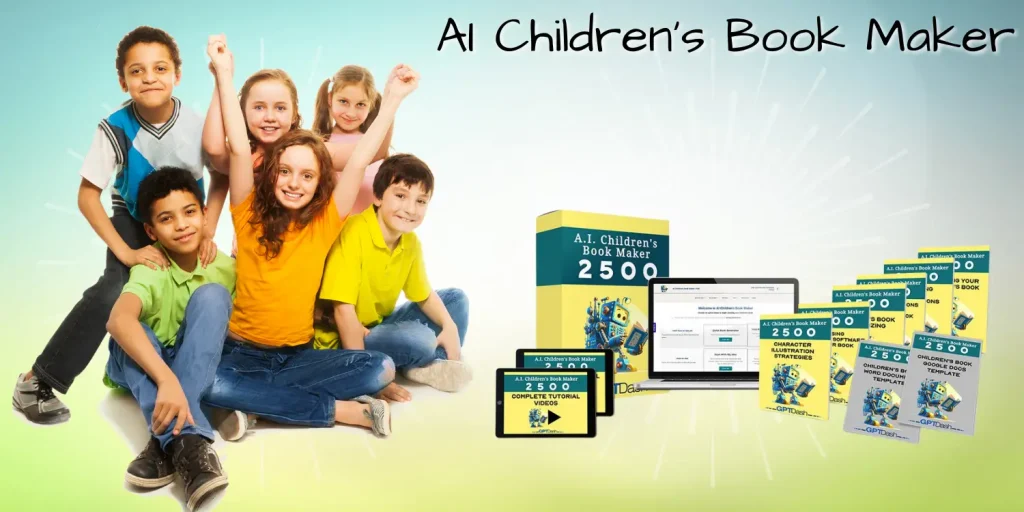
What are the features of AI Children’s Book Maker?
The AI Children’s Book Maker may help beginners, writers, illustrators, and educators create colorful, original, and interesting AI Children’s Book Maker. The main features of an AI children’s book creator can be divided into several categories that enhance the creative process, encourage user pleasure, and produce top-notch content:
1. Story Generation: Possibly its most powerful attribute is that it is able to produce user-generated narratives. The AI might construct a story for the required age group given a theme, character, or the place/setting. In the case of the learning objectives being told by stories, that is, it can create practice-specific stories as well as anecdotes, be good for talking points, and tell a story even while promoting a good moral.
2. Customisable Characters and Settings: With this tool, users can change the facial appearance of a character and other legal identity aspects. Interestingly, users are also able to change the characters’ age, sex, and appearance in all the stories, just as it was with other aspects. This aspect ensures that it is easy to accommodate books for consumption to fit the reader’s requirement in the matters of a diverse, integrated society or in reference to certain culture.
3. Illustration Support: Thus, due to the AI utilisation in children’s book creation, images technologies began to be used to create illustration images. Authors can use plain English to describe a given scene, character, or environment, and through AI, it is possible to draw it in as realistically, humorously, or cartoonishly as possible.
Some tools are usable where a user can change colours, facial expressions on his or her artwork, and other features.
4. Interactive Features: The AI Children’s Book Makers can be used with some interactive aspects such as games, sounds, objects, or pictures that kids can click on, as well as animations. With the help of these facilities, young children could even be more conscious and learn more information.
5. Automatic Editing and Proofreading: However, have no fear; an AI-assisted editor might “enhance’ the work by suggesting a change in grammar, readability, or even the skeletal frame of the sentences themselves. Therefore, people who are not professional writers can write quality articles, and they will not need to attend many classes on editing.
6. Personalised reading experiences: The teacher can then choose which aspects of the story to explain to the child by using an interface where the child’s behaviour, preferences, or learning level are articulated. Similarly, it could, for instance, change the tense used or some of the words or perhaps try to rewrite it to fit children’s comprehension levels.
7. Language Support: Many children’s book producers integrated interfaces to create a book in another language or translate the completed work to enable children of other languages to learn from those books.
8. Publishing Support: Some of them contribute to preparing the book for publication, and after that they extend a helping hand. This could include helping a consumer with book selling through online stores like Amazon, the Apple iTunes store, and the Google Play store; book structure; and preferences of e-books and personally printed copies.
Lastly, through the integration of both art and technology, AI children’s book developers make it possible and faster to write and illustrate creative, quality, and entertaining books with customization. These resources enable people to tell a story for educational, entertaining, or any other purpose in easier ways.

What can be done with AI Childrens Book Maker?
AI Children Books Maker is a powerful tool that helps users—especially parents, teachers, and writers—to create fun and engaging children’s stories. The use of learning algorithms is applied in the generation of layout designs, stories, and drawings that can fit the age, learning modality, and interests.
The use of original stories is another key feature that defines an AI children’s book maker. It will work to generate an entirely new storyline based on topics, characters, or different ethical lessons that the users would like to find in the book. It is very useful, especially to parents and teachers who would like to teach good values to their children, share stories on their children based on their culture, or even come up with interesting stories from their own interests and hobbies. Besides, the AI might change the grammar and the syntactical style as well as vocabulary to make the material comprehensible to children or adults, respectively.
It is also important for children’s books that the AI can create visuals to go along with the text in addition to telling stories themselves. It even generates very beautiful, artsy images that fit the atmosphere and story of the narrative through the use of smart picture identification and graphics specification. This way the child’s interest is held, and a firmer connection to the material is made because of those drawings.
Also, the AI Children’s Book Maker may contribute by enhancing the format of the content, ensuring that all the pages of the book form a unity, have a proper design, and are easy to read. This removes the necessity for special design skills and offers the authors the possibility to self-publish and print their books easily, looking neat.
Final Evaluation Finally, the intended purpose of the AI Children’s Book Maker will also be to increase the success and enjoyable level of bookmaking for every user of the platform, regardless of their level of computer literacy. It motivates people and provides them with a tool that allows them to come up with engaging and attractive texts for children.
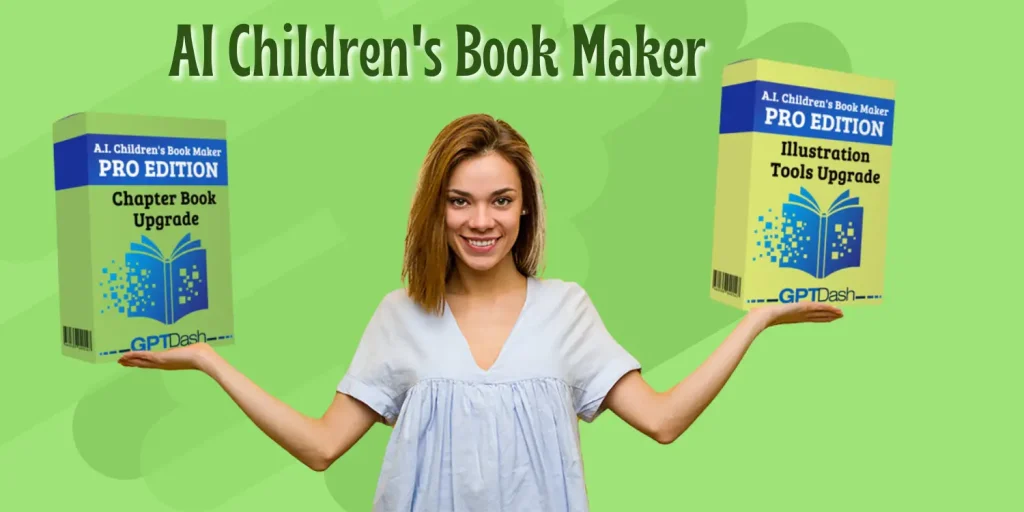
AI Children’s Book Maker Conclusion?
In conclusion, AI is capable of revolutionising children’s bookmaking by encouraging creativity, giving them the chance to put an individual spin on materials, and simplifying the production process. AI tools are making what was dreamt of possible for writers, illustrators, as well as educators to come up with interesting stories that are of interest to people of all ages, abilities, and learning interests. AI helps to focus on such concerns as concepts, storylines, characters, and illustrations since AI deals with designing concepts, creativeness, and interaction.
The possibility to get the material inclusive and diverse is one of the most interesting features of AI in children’s book creation. Both children and AI can develop appreciation for literature since the technology can produce appealing characters and plots supported by useful cultural representation. AI also enhances the flexibility of modifying the stories depending on the tastes and learning needs of learners, making education fun and personalised.
The ability to use AI to enhance the production process is another strength for the AI Children’s Book Maker industry. AI has greatly benefitted independent authors and small publishers by making a number of processes that earlier were time-consuming create better, high-quality books. Due to the democratization of bookmaking, more people may now participate in a literary society.
AI is one of the powerful instruments that can facilitate the work of telling stories; nevertheless, it is unable to create them by itself. One has to wonder about the emergence of new opportunities for children’s book writers and consumers as new technology starts appearing, driven by AI. Thus, AI makes children interested in the subject, entertains them, and helps them learn new information using the tremendous opportunities of storytelling.
